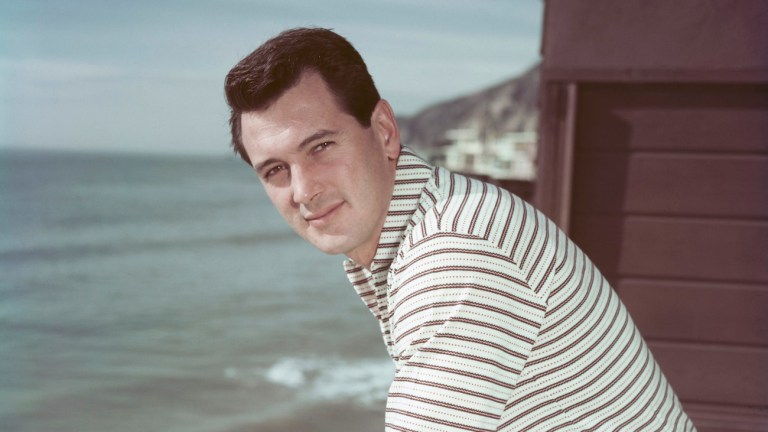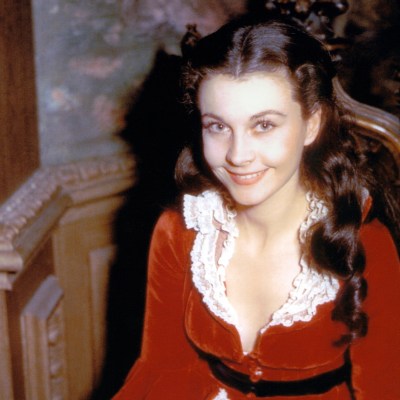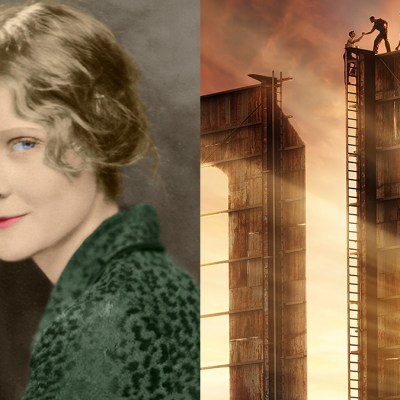Netflix’s Hollywood: The Real History of Rock Hudson
Rock Hudson is one of the main characters on Ryan Murphy’s Hollywood. However, the real Hudson lived a very different life.

This article contains Hollywood spoilers. You can find our spoiler-free review here.
It’s a beautiful fantasy. On Oscar night 1948, the same evening that in real-life Walt Disney’s troubling Song of the South received an honorary Oscar for James Baskett’s performance, Rock Hudson came out of the closet in front of the entire world. Standing on the red carpet with his hand in Archie Coleman’s, a black man who was nominated for the Best Original Screenplay Oscar, Rock announces his love to the world and says he is not afraid. But like many sparkling things in Ryan Murphy shows, it’s still only a fantasy. In real life, there was no Archie Coleman, no Meg to catapult Rock Hudson’s career into liberal advocacy, and no coming out of the closet.
In recent years, Rock Hudson is likely most remembered, whether he would’ve liked it or not, as the face of the AIDS epidemic that ravaged the gay community and many others during the 1980s and ‘90s. But his life wasn’t that of a martyr, nor necessarily one of empowerment. Rather Hudson was a man of his time, and who left an irreplaceable legacy in Hollywood history during his all too brief life.
Born in November 1925, the man who would become Rock was neither a “Hudson” nor a “Fitzgerald” as he is introduced in Netflix’s Hollywood. Rather he was Roy Harold Scherer Jr., named after his father, an auto mechanic in Winnetka, Illinois, a small village 16 miles outside of Chicago. Yet just four years later and at the beginning of the Great Depression, his father walked out on the family after losing his job. Hence why his son became Roy Fitzgerald, taking the name of a stepfather, and how Roy ended up in Los Angeles.
Roy had come to the City of Angels looking to find that biological father after World War II ended. Prior to that, like many other young men in his generation, Roy served in the military during World War II. After graduating from high school in 1943, he’d even simply enlisted in the U.S. Navy, as opposed to waiting for the draft, where he went on to serve as a mechanic in the Philippines. But come 1946, he was discharged in San Francisco and in close proximity to Hollywood when he traveled south looking for his father.
Living for a brief time with his father and a new family he’d started, Roy worked as vacuum salesman like the old man and then as a truck driver after his father threw him out. They rarely ever talked to each other again. Still, things were about to look up for Roy after he was told by a male lover about Henry Willson, the talent agent who discovered Lana Turner and previously ran David O. Selznick’s casting apparatus (Selznick being the producer behind Gone with the Wind). Willson had just recently opened up his own talent agency where he was signing and grooming bright young actors like Tab Hunter and Guy Madison.
Those were of course not Guy or Tab’s real names, but Willson had a penchant for almost exclusively signing beefy young men who he remade in his own image, including by dubbing them with star monikers. He did the same for Roy after the young man sent him a headshot in 1947. Christening him “Rock,” after the Roc bird from Arabian folklore, and “Hudson,” after the Hudson River Valley, Willson is credited with “inventing Rock Hudson.” Perhaps that’s why Rock at first hated his new name.
It stuck though, as did Willson’s other alleged improvements, including capping Rock’s teeth and deepening his voice. Hollywood quotes the legend that Willson advised Rock to scream at the top of his lungs from a mountain when he got his next cold, but whether that actually happened or not, throat surgery was still required.
Willson also introduced Rock to director and producer Raoul Walsh, who in another life helmed High Sierra (1941) and Strawberry Blonde (1941) before the war—he also has the distinction of playing John Wilkes Booth in D.W. Griffith’s KKK love letter, The Birth of a Nation (1915). Like Willson, Walsh was taken by Rock’s good looks and signed him to a contract before casting him in his next movie, Fighter Squadron (1948). A post-war aerial melodrama of the variety that would influence George Lucas in the years to come, the film provided Hudson with a small role that got even smaller when his scene was reduced due to legendarily bad acting. Despite having only one line, Hudson mangled it so badly that it had to be rewritten for him 38 takes later.
Walsh soon passed Hudson over to Universal Pictures where he received lessons in acting, singing, dancing, horseback riding, and fencing. But perhaps the first sign that he was an actor to keep was how popular he became after doing a photo session for Photoplay magazine. Rock was thus soon promoted to leading man status after starring in Scarlet Angel (1952) where he played a sea captain looking to get rich in the midst of post-Civil War melodrama in 1865 New Orleans. Afterward, Hudson became a go-to B-star at Universal, including in Taza, Son of Chochise (1954), a hilariously problematic technicolor Western with Rock as the ripped son of an Apache Indian.
Rock’s career didn’t take off, however, until he starred opposite Jane Wyman in Magnificent Obsession that same year. Playing a man who became a doctor out of a sense of guilt after ruining another physician’s career, Rock embodied a hunky sense of wounded nobility as he found atonement by curing the blindness of the woman he loved. The role led to a variety of great leading man parts, chief among them in George Stevens’ Giant (1956). Stevens, one of the most versatile A-list directors in Hollywood, returned from WWII determined to make grittier, earthier dramas after all the adventure films and musicals he helmed in the 1930s.
Giant is a gripping drama about old Texas fading into modernity, and a sordid love triangle between Hudson, Elizabeth Taylor, and James Dean. The movie infamously marks the third and final Dean performance before his death; it also began a lifelong friendship between Hudson and Taylor, and netted Rock the only Oscar nomination of his career.
After Giant, Hudson became one of the go-to leading men of the 1950s and early ‘60s, including when he reluctantly was forced by Universal to star in Pillow Talk (1959), a romantic comedy which co-starred Doris Day. Introducing sexual farce and mildly risqué “bedroom humor” into the Hollywood romantic comedy formula, it became an instant classic of its genre and the template of several quasi-remakes he co-starred in with Day, including Lover Come Back (1961) and Send Me No Flowers (1964).
During all of this time though, Rock remained quietly, if not solitarily, in the closet. Unlike on Hollywood, he did not have a steady long-term boyfriend during the early years of his life. Instead he enjoyed a string of lovers. He is alleged to have looked across his film sets for other gay men he could summon to his trailer, and had a rotating crew of manly companions who he always insisted could pass for straight and “masculine” like himself. Friend and gay author Armistead Maupin claimed Rock would have sex sometimes multiple times a day with men he “didn’t know very well.”
It’s perhaps this reason that Confidential magazine, the first widely read and nationally well-known tabloid, was able to dig up an exposé on Hudson’s private life with the intention of outing him as gay to the country in 1955. Agent Henry Willson killed the story but not by relying on mobsters like in the TV show. Rather he threw two other clients under the bus in a quid pro quo, including providing Rory Calhoun’s arrest record to Confidential.
Rock’s secret was safe for now, although he quickly married Willson’s secretary Phyllis Gates in an elopement that just so happened to have Universal publicity photographers on hand. He then immediately did interviews with industry-friendly gossip columnists Hedda Hopper and Louisa Parsons to sell his marital bliss. To this day, there is debate among biographers about Rock and Phyllis’ marriage, with some suggesting it was a lavender arrangement and that she was herself a lesbian, and others claiming there was affection. Others still say she blackmailed him for the divorce and to keep quiet afterward about his homosexuality. Whatever the truth, they did divorce three years later and Gates never remarried.
Rock, meanwhile, found his life changing in the ‘60s. Those slightly naughty sex comedies that seemed so provocative in John F. Kennedy’s Camelot now looked hopelessly square by the end of the decade. Hudson also fired Willson around this time, although by that point Willson had given into drug and alcohol addictions, and unlike Hudson was publicly known as a gay man, making him a Hollywood pariah, particularly for new clients who did not want to end up on his casting couch or even just endure the rumors associated with it. Rock also was still dogged by rumors of being gay. Indeed, the last red carpet he ever walked was for Ice Station Zebra (1968) where hecklers in the crowd chanted homophobic slurs at him.
Hudson didn’t live with another man until his middle-age in the 1970s. Moving in with publicist Tom Clark, Hudson drank more, smoked more, and gained weight. But he did find a new career in television and theater after the movie studios stopped calling. He also infamously was the victim of a joke gone wrong when friends sent out wedding invitations between himself and Huntington Beach neighbor Jim Nabors as a prank. The latter had played Gomer Pyle on The Andy Griffith Show, so the gag was that Rock Hudson would become “Rock Pyle.” But after the tabloids got wind of it, it was the end of Nabors and Hudson’s friendship.
Eventually Tom Clark moved out of Hudson’s home and in the 1980s, Hudson began an affair with the much younger Marc Christian. But he continued having other flings on the side, including one that proved fatal.
In 1984, Rock received a call from a younger man he’d known the year before in New York. The acquaintance revealed he tested positive for HIV. Rock soon found out he too had the virus that caused AIDS, but he refused to go public about it. In fact, that same year he visited old Hollywood buddies Nancy and President Ronald Reagan in the White House. Hudson apparently had a noticeable lesion caused by AIDS on his neck. He continued to try to work, however, appearing on Dynasty where he insisted on faking his kissing scenes (as they didn’t know how AIDS was transmitted), and then by appearing on his friend Doris Day’s new talk show in 1985. It was while on the latter that his noticeably gaunt appearance made the nightly news.
Afterward he flew to Paris for the second time to receive AIDS treatment by French doctors, but he became so ill in the hotel that he was immediately taken to the American Hospital in Paris. There his doctors refused to hide his condition from reporters, so only out of pure reluctance did Rock finally draft a press statement announcing he had AIDS. His French press agent, Yanou Collart, said if it was Rock’s choice he’d “never admit he had AIDS.” Still, it became national news back home that shook middle America: Good looking and handsome Rock Hudson, whom women loved, had the “gay virus,” which conservatives in the country treated as a “moral affliction.” Rock’s pal Reagan refused to even personally acknowledge AIDS in public. Not that Rock ever publicly admitted he was gay. It was his friend Armistead Maupin who effectively outed Rock to the press.
All his life, Rock preferred the closet, even as it led to anxious tics like chewing on his nails until they were discolored. As it was, Hudson announced he had AIDS in July ’85. He was dead by October. Nevertheless, his admission to having the disease forced much of middle America to begin reconsidering what they thought about AIDS as well as well as gay men, with Morgan Fairchild not exactly fairly musing, “Rock Hudson’s death gave AIDS a face.” Not that it got Reagan to even publicly say the word “AIDS” until 1987, nearly two years after the disease killed his friend. Never mind leading a comprehensive national response.
Rock’s life was a much more complicated and nuanced affair than Hollywood likes to imagine in its utopia. A man defined by the attitudes and culture of the mid-20th century, a culture that left him to suffer in silence, Rock still helped provide wider acceptance in American culture for the dignity of gay men, as well as leading a career that has a shimmering legacy all its own. It may not be the Hollywood story, but in its own way, it’s a very honest one.


